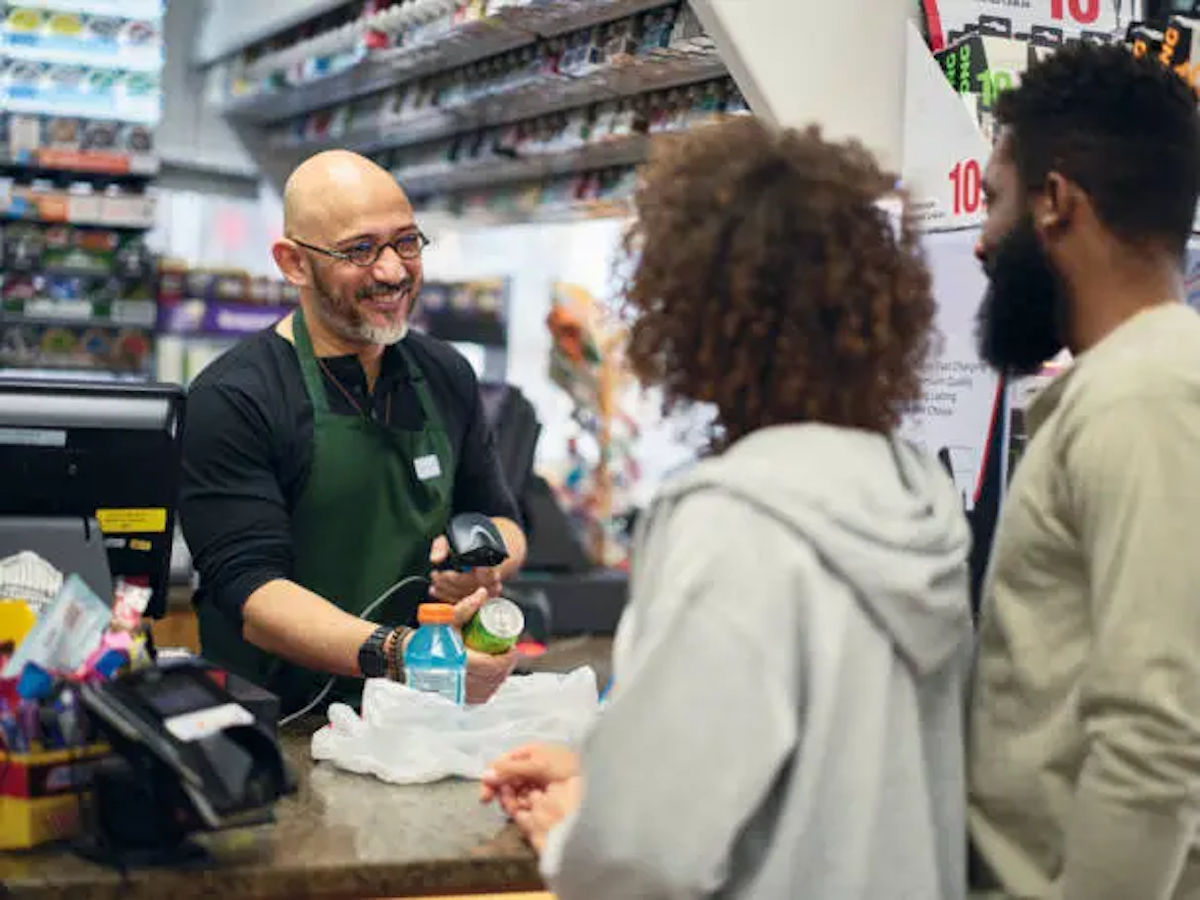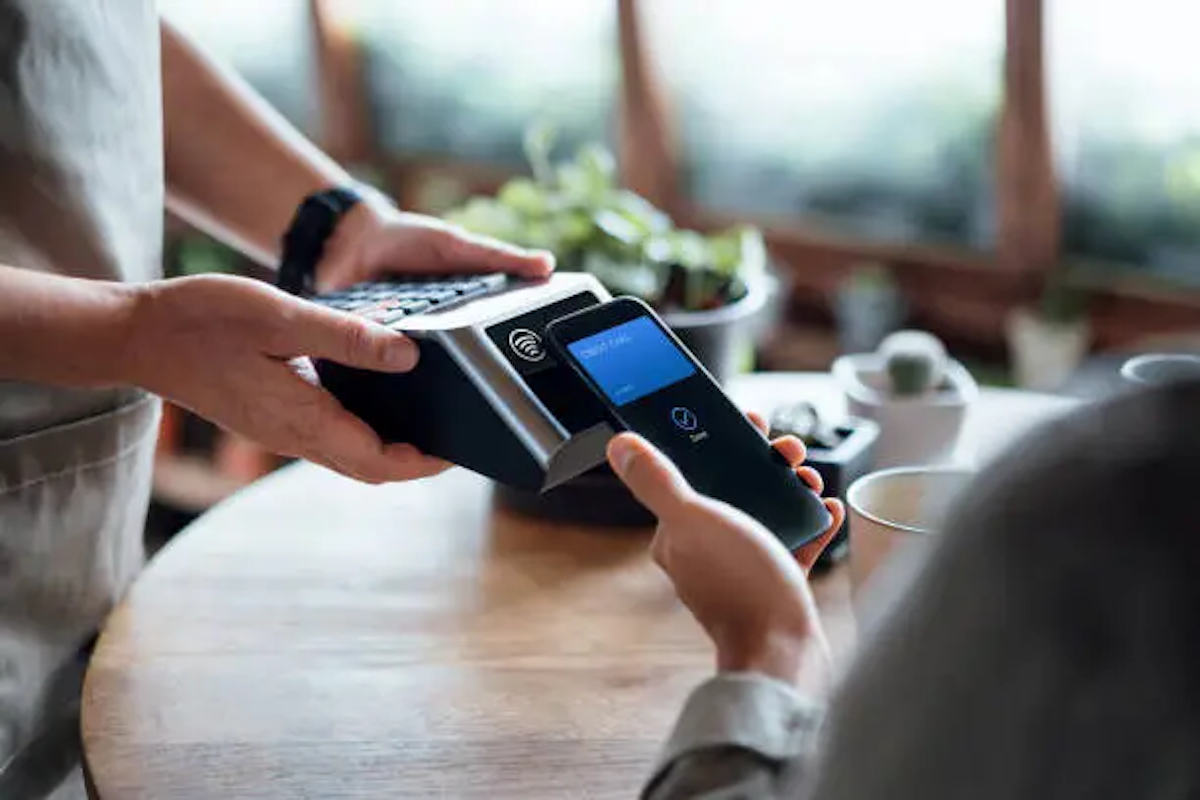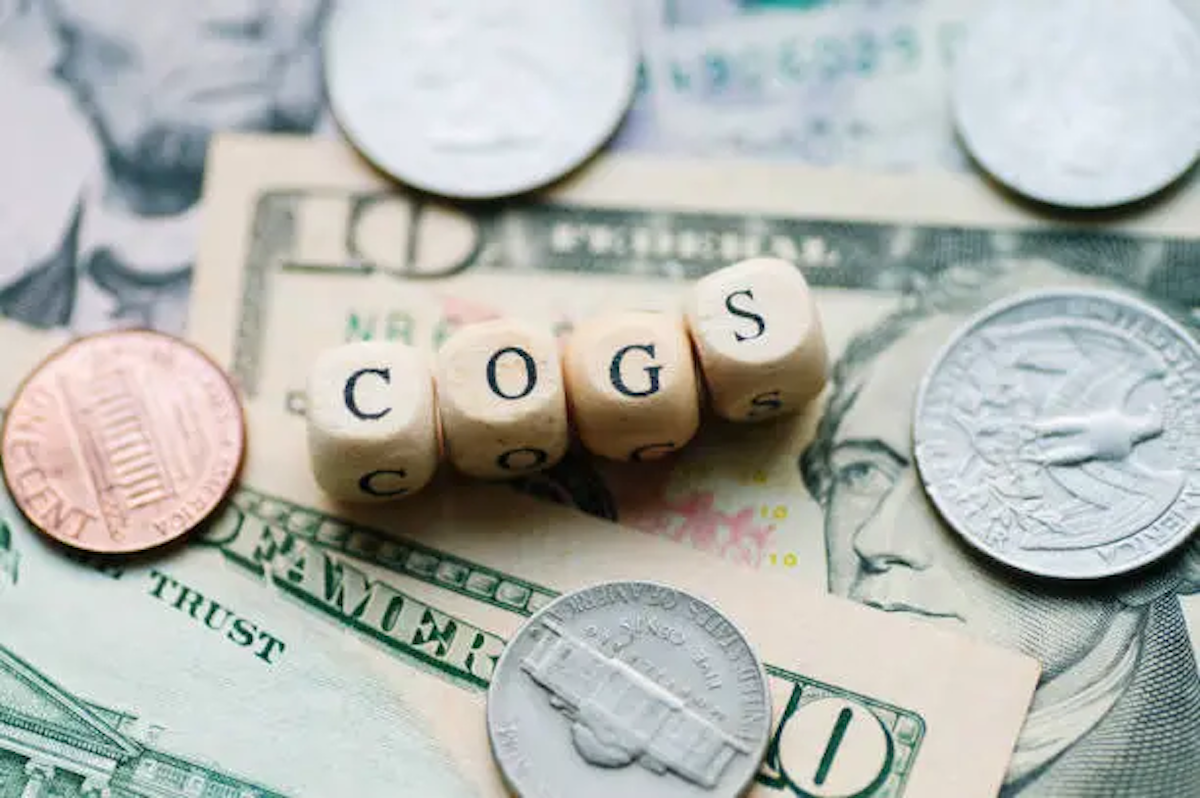What are the Average Restaurant Sales per Month by Category?
Breaking down average restaurant sales per month gives restaurant owners, managers, and investors a clearer view of how the business is performing....
Platform
Combining online ordering, loyalty, omnichannel messaging, AI insights, and payments in one platform. Paytronix delivers relevant, personal experiences, at scale, that help improve your entire digital marketing funnel by creating amazing frictionless experiences.
A Complete Customer Experience Platform
Online Ordering
Acquire new customers and capture valuable data with industry leading customization features.
Loyalty
Encourage more visits and higher spend with personalized promotions based on individual activity and preferences.
Catering
Grow your revenue, streamline operations, and expand your audience with a suite of catering tools.
CRM
Build great customer relationships with relevant personal omnichannel campaigns delivered at scale.
Artificial Intelligence
Leverage the most data from the most customer transactions to power 1:1 marketing campaigns and drive revenue.
Payments
Drive brand engagement by providing fast, frictionless guest payments.
Solutions
We use data, customer experience expertise, and technology to solve everyday restaurant and convenience store challenges.
Contactless Experiences
Accommodate your guests' changing preferences by providing safe, efficient service whether dining-in or taking out.
Customer Insights
Collect guest data and analyze behaviors to develop powerful targeted campaigns that produce amazing results.
Marketing Automation
Create and test campaigns across channels and segments to drive loyalty, incremental visits, and additional revenue.
Mobile Experiences
Provide convenient access to your brand, menus and loyalty program to drive retention with a branded or custom app.
Subscriptions
Create a frictionless, fun way to reward your most loyal customers for frequent visits and purchases while normalizing revenues.
Employee Dining
Attract and retain your employees with dollar value or percentage-based incentives and tiered benefits.
Order Experience Builder
Create powerful interactive, and appealing online menus that attract and acquire new customers simply and easily.
Loyalty Programs
High-impact customizable programs that increase spend, visit, and engagement with your brand.
Online Ordering
Maximize first-party digital sales with an exceptional guest experience.
Integrations
Launch your programs with more than 450 existing integrations.
Loyalty Programs
Deliver the same care you do in person with all your digital engagements.
Online Ordering
Drive more first-party orders and make it easy for your crew.
Loyalty Programs
Digital transformations start here - get to know your guests.
Online Ordering
Add a whole new sales channel to grow your business - digital ordering is in your future.
Integrations
We work with your environment - check it out.
Company
We are here to help clients build their businesses by delivering amazing experiences for their guests.
Meet The Team
Our exceptional customer engagement innovations are delivered by a team of extraordinary people.
News/Press
A collection of press and media about our innovations, customers, and people.
Events
A schedule of upcoming tradeshows, conferences, and events that we will participate in.
Careers
Support
Paytronix Login
Order & Delivery Login
Resources
Learn how to create great customer experiences with our free eBooks, webinars, articles, case studies, and customer interviews.
FlightPaths are structured Paytronix software onboarding journeys designed to simplify implementation and deliver maximum ROI.
See Our Product In Action
E-Books
Learn more about topics important to the restaurant and c-store customer experience.
Reports
See how your brand stacks up against industry benchmarks, analysis, and research.
Blog
Catch up with our team of in-house experts for quick articles to help your business.
Case Studies
Learn how brands have used the Paytronix platform to increase revenue and engage with guests.
Is your brand tapping into these three unshakeable pillars of guest loyalty in 2025?
9 min read
Apr 01, 2025

What comes to mind when you think of a convenience store? Maybe it’s the bliss of not having to circle a massive parking lot or wander through aisles of products, only to forget what you actually came for. Mostly, though, it’s the higher prices that sting a little bit, but we’re happy to fork over more, well, for convenience.
Leading c-stores understand, however, that mere convenience alone doesn’t guarantee the success of a c-store. Behind the most successful convenience stores, you’ll find an accessible location and a store stocked with essential basic groceries. Add in customer-friendly hours (extended hours, operating seven days a week), and you’ll understand the basic framework for running a successful store.
However, this only scratches the surface. Exceptional convenience store examples stand out thanks to smart marketing, intuitive store layouts, and customer loyalty programs that keep people coming back for more. Learn all about these elements throughout the remainder of this blog post!
Year after year, the same names pop up in the top 100 convenience retailer lists. No surprises here; it's usually heavy-hitting convenience store chains like 7-Eleven and Circle K (Alimentation Couche-Tard), and Casey’s. But did you know out of the 152,255 c-stores registered in the US, over 90,000 are independent? That means a huge chunk of the convenience store industry is made up of smaller operators battling giants for every customer.

Image: NACS Magazine
Learning from proven leaders gives you a head start. These successful brands consistently boost store sales and attract customers by fine-tuning the basics. They've already spent decades experimenting (and making expensive mistakes). By modeling their winning strategies—such as smart layouts, clever promotions, and products people genuinely want—you can skip past trial and error.
Remember that borrowing ideas isn't cheating. Here, we’re only leveraging wisdom. It speeds up growth, keeps your customers happy, and, most importantly, keeps them coming back, even if you don't have Casey’s pizza at your disposal.
Exploring leading convenience store examples provides ample insights you can borrow to boost your own c-store business. After all, these industry frontrunners didn’t get there by accident.
Here are five convenience stores from the U.S. and around the world that have cracked the code on customer satisfaction and consistent growth.

Image: Pexels
Up first is 7-Eleven. With over 85,000 stores across the globe, this Japanese-owned convenience store chain is probably one of the most recognizable c-store chains in existence. 7-Eleven normalized the concept of the convenience shop as a franchise and made products like Slurpees and Big Bite hotdogs household names.
So, how did they do it? 7-Eleven consistently drives strong convenience store sales through a diverse product mix that includes fresh, ready-to-eat meals, snacks, beverages, and tobacco products. Their 7Rewards digital loyalty program design is a standout, offering personalized rewards and promotions. These tactics help boost repeat visits and customer lifetime value, setting the benchmark in convenience loyalty marketing.

Image: Unsplash
As a part of American culture for over 200 years, Wawa wins over customers with its unique community-centric approach. Wawa stores are designed strategically with speed in mind. They have clearly marked ordering stations, touchscreens for customized sandwiches and coffee, and express checkouts for maximum convenience.
Digitally, Wawa is ahead of the curve, integrating platforms like online ordering and well-designed mobile apps for faster pickups. They put customer convenience first, both online and in-store. In doing so, Wawa has created fiercely loyal fans, especially along the East Coast.

Image: Wikimedia Commons
Be honest—when you hear the name Casey’s, you think of that quick slice of pizza you grab on a road trip while filling up your car with gas. This sentiment isn’t accidental, as Casey’s stores distinguish themselves from regular c stores attached to gas stations by transforming their locations into local food hubs.
Casey’s implements a hyper-local approach by adapting product offerings and home-style cooking to local service areas. This is one of the biggest reasons why the chain has become popular and successful across rural areas in North and South Dakota, Nebraska, and Florida. This success is a testament to the power of convenience paired with quality, home-style food.

Image: Unsplash
Canada’s Alimentation Couche-Tard operates worldwide with roughly 16,000 stores spread across North America, Southeast Asia, and Europe under the banner of Circle K. In Sweden and Denmark, the brand is known locally as Ingo where it operates as a gas station and c-store hybrid. In Québec and Western Canada, where the company originated, Couche-Tard convenience stores are basically a household name.
Alimentation Couche-Tard operates a franchise business model and has achieved success through its four-lighthouse model of winning:
It achieves this primarily through stocking carefully selected essentials and implementing innovative technology solutions. These include frictionless checkouts and the Inner Circle loyalty program platform, which uses personalization and purchase points to offer future fuel and food discounts.

Image: Wikimedia Commons
Located in the UK, Tesco Express is a smaller-scale version of the popular and larger Tesco supermarket grocery stores. These convenience stores target metro and busy city areas for shoppers who need quick access to daily essentials or want to grab ready-to-eat meals.
Tesco Express is an example of a franchise store that leverages the popularity of its large-format supermarket. Customers understand that Tesco Express typically sells the same products as Tesco and at similar prices. This already successful model is reinforced with loyalty programs such as the Tesco Club Card, which can be used at Tesco, Tesco Express, and Esso gas stations.
Not every convenience store has the luxury of piggybacking off of its larger chain. However, this business model does emphasize how product and experience standardization pay off.
The convenience stores featured above share several features that contribute to their success. It mostly comes down to the diversity of products, convenience (of course!), and the technology they’re using to drive growth. Let’s explore these three winning strategies and take a look at how they’ve been implemented.
The best-performing convenience store chains know variety is the spice of life. We’re not just talking about staples such as milk and bread, but convenience items too. Successful stores like Tesco offer meals that can be microwaved in an office kitchen in downtown London, and a 7-Eleven at Surfers Paradise in Australia would typically stock sunblock and beach toys.
These are niche products tailored to local tastes. Stores that expand into fresh produce and quality meals, like Casey’s Pizza and Wawa’s Hoagies, significantly attract customers who often leave with a little more than what they initially intended to buy.
Unsurprisingly, convenience is central to any great convenience shop. Leading brands consistently offer customer-friendly policies like extended hours so they're available exactly when customers need them most—whether it's late-night snack cravings or early-morning coffee runs. Payment convenience also matters. Brands like Circle K provide multiple options, including digital wallets, contactless payments, and traditional cash transactions.
Top stores don’t just rely on traditional marketing and walk-ins. They leverage tech-driven solutions to engage customers effectively. 7-Eleven uses advanced inventory management systems like Standby to maintain constant stock levels and consistently offer fresh products.
Chains like Wawa have used ERP and CRM systems like SAP in the past but have recently adopted digital integrations. For convenience stores, this means partnering with platforms that already provide online food delivery services, such as Uber Eats and DoorDash.
Many convenience stores improve their digital presence using app-based promotions, optimizing visibility in app stores, driving downloads, and translating website activity directly into higher store sales.
Remember the time when a few 7-Eleven’s transformed their convenience stores and products into the Kwik-E-Mart from the Simpsons? It attracted a lot of foot traffic and sparked some major buzz—and business too.
Traditional convenience stores probably don’t have the budget to partner up with Fox Studios and Disney, but they can leverage some smart strategies like targeted loyalty programs and personalized marketing automation. Consider 7-Eleven, whose loyalty programs rack up points every time you buy a Slurpee. Similarly, Wawa uses personalized emails and app notifications to get tailored deals to customers who will use them based on past purchases.
These examples reflect the classic 4 P’s of marketing: Product, Price, Place, and Promotion. When combined with the technology to get to know your customers well and thoughtfully executed, it means attracting more customers and building loyalty. Basically, when customers feel special and heard, they keep coming back, and they often spend more.
Your store layout can either guide customers strategically to exactly what they need or leave them feeling lost, frustrated, and walking out the door empty-handed. The best layouts help popular and money-making stock like tobacco products and ready-to-eat meals jump off shelves and into baskets.
These layout strategies apply even to smaller operations like corner stores and mini convenience stores. Let’s take a look at some actionable tips to optimize your convenience store layout:
Thoughtful placement, smart merchandising, and strategic effort are all it takes to make sure customers find what they want and discover plenty along the way.
Great customer service turns a casual visitor into a loyal regular. This loyalty is worth its weight in gold, especially when your c store has to compete with big-box grocery stores and trendy multi-department hyper convenience stores.
Investing in some staff training makes all the difference. Employees should master basic customer interaction skills like greeting visitors with a warm demeanor, remembering the names of locals, and addressing issues and concerns swiftly.
Encouraging genuine and community-orientated connections between staff and customers is especially important for convenience stores. Locals who feel recognized and valued are far more likely to come back for social interactions alone, even when competitors offer similar products at lower prices.
It’s not just your regular retail customers who need attention, as you also need to nurture B2B relationships to boost your local reputation and make sure your convenience store isn’t just a favorite for locals, but for the community as well.
Not every retail business has the resources of major chains, nor the protection of a franchise to shelter them from the loss of in-store sales if a strategy goes wrong. However, smaller and independent convenience stores can still successfully adopt the strategies of successful giants.
Start by selecting a few high-impact practices that fit your store’s scale and local customer base. An example of a strategy big players like Wawa and Circle K use is the implementation of a loyalty program. It might feel obvious that your convenience store should have one too, but unlike 7-Eleven, you may not have a bottomless tech budget to create your own.
Using an external platform like Paytronix to manage customer loyalty and promotions is a cost-effective solution, giving you access to sophisticated marketing tools without major investments. However, adapting this best practice can become tricky.
If your c-store serves transient visitors, such as a tourist area or major transport hub, restricting promotions and discounts only to loyalty members has been found to alienate customers who naturally will not be revisiting. Here, you’ll need to focus on convenience, variety, and friendly service to capture those one-time buyers, as well as adapting your loyalty program benefits to suit your local customers.
As you can see, merely copying the successful strategies of the top ten convenience stores won’t get you results. You need to understand your customers and tailor these strategies to fit your unique strengths and limitations.
Adopting the proven strategies of big brands sounds great in theory, but in reality, it can bring unexpected challenges. What works for a big chain with multiple stores around the country might not bring the same benefits to other convenience stores. Aspects such as limited resources, market differences, and technology integration hurdles (things bigger operations don’t always face) might end up causing more harm than good when it comes to your store.
Here are the common challenges you might face, along with practical solutions:
By thoughtfully addressing these challenges, you can successfully adopt winning practices without sacrificing quality, customer satisfaction, or your sanity.
Want to learn more about the top convenience store chains? If so, we’ve got the answers to all the big questions. Take a look below for more details.
According to the American Customer Satisfaction Index and industry benchmarks, these convenience stores rated best:
The three most common examples of convenience goods you’ll likely find in a convenience store will probably surprise you. These items are:
The 7-Eleven franchise is the largest convenience store company in the U.S. by store locations alone. However, Casey’s General Stores, a publicly traded company with over 2,500 locations in the U.S., is the largest US-owned convenience store company.
When talking about the largest retail store in the US, Macy’s Herald Square tops the list at an eye-watering 2.5 million square feet. The largest convenience store in the US, however, is Buc-ee’s in Sevierville, Tennessee, at 74,000 square feet.
Taking inspiration from top-performing convenience stores is a smart way to level up your business. Remember, though, you’re not 7-Eleven, and your tech and marketing budget probably isn’t unlimited.
Instead of chasing complex DIY systems that aren’t practical, consider implementing a solution tailored to your store. Platforms like Paytronix help you deeply understand your customers, enabling you to create a customer experience and loyalty program that fits your needs, not someone else’s.
Ready to delight, attract, and retain more customers? Book a demo today with Paytronix and discover how our specialized solution can transform your c store without big-brand budgets.

Breaking down average restaurant sales per month gives restaurant owners, managers, and investors a clearer view of how the business is performing....

Understanding the cost of goods sold (COGS) is crucial for maintaining healthy profit margins in both restaurants and convenience stores (c-stores)....

Menu engineering is a proven strategy to increase restaurant profitability. By analyzing sales data, you can refine your offerings to focus on...